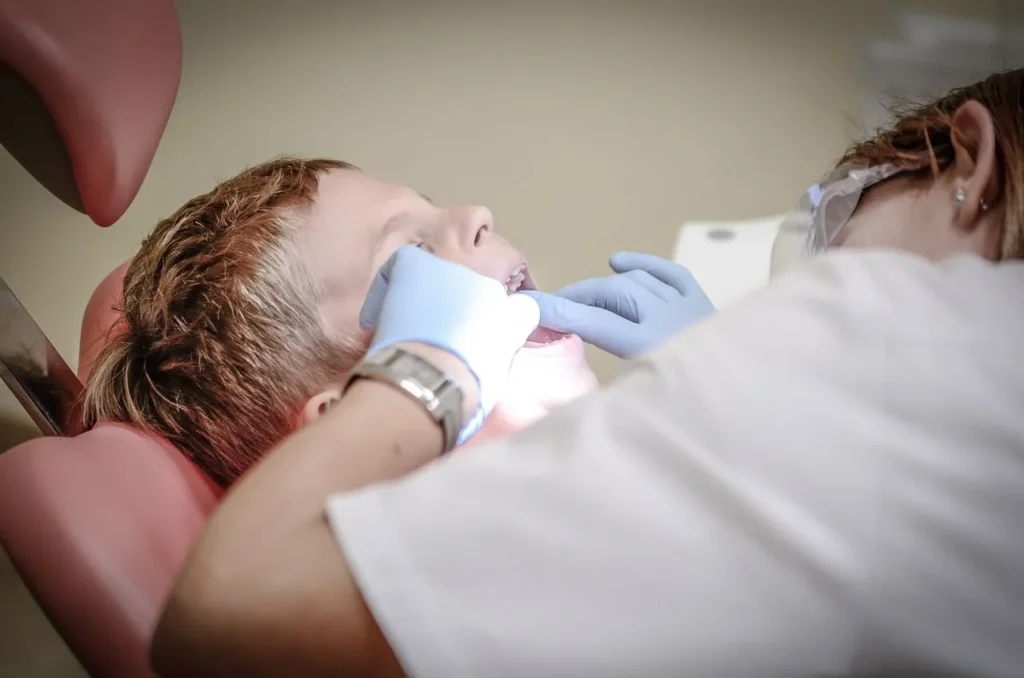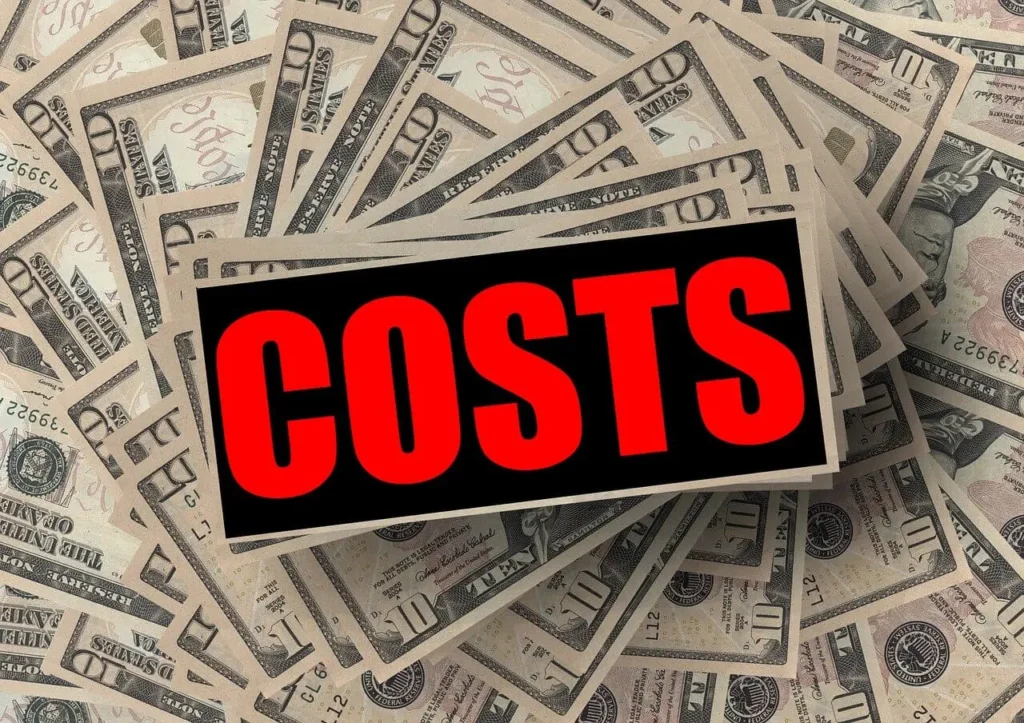A good smile attracts everyone, and to get it, one should have neat and clean teeth. Daily brushing of the teeth with synthetic or natural toothpaste is not enough; further care is needed to remove plaque and tartar from the upper layer of the teeth. Maintaining good oral hygiene is a crucial factor in overall better health, but many people without dental insurance worry about the cost of dental cleanings. While routine cleanings are typically affordable compared to other dental treatments, the prices can vary significantly depending on your location, the clinic, and the condition of your teeth. If you’re wondering, “How much is a dental cleaning without insurance?” you’re not alone. This guide covers everything you need to know, from average costs in the USA to the different types of cleanings and the factors that affect pricing. Understanding these elements can help you make informed decisions about your dental care and avoid surprise bills.
Average Cost of a Dental Cleaning Without Insurance in the USA:
The cost of a dental cleaning without insurance can range from $75 to $200 for a basic cleaning. If you require more intensive treatment, such as deep cleaning, it can range from $300 to $900 or more, depending on the number of affected quadrants. Prices may also vary based on geographic location; urban dental practices tend to be more expensive than those in rural areas.
In general:
- Routine Prophylaxis Cleaning: $75–$200
- Deep Cleaning (Per Quadrant): $100–$300
- Full Mouth X-rays: $100–$250 (if not included)
Some clinics offer discount plans or sliding scale fees for low-income patients. It’s also worth checking with dental schools, which often provide affordable care under professional supervision.
What’s included in a Dental Cleaning?
Professional dental cleaning is more than just brushing your teeth; it’s a comprehensive procedure designed to maintain your oral health. Here’s what’s typically included:
1. Oral Exam:
Before the cleaning begins, your dentist or hygienist will conduct a visual inspection of your mouth to identify signs of cavities, gum disease, or other oral health issues.
2. Plaque and Tartar Removal:
Using a scaler, the hygienist removes plaque (soft film of bacteria) and tartar (hardened plaque) from your teeth, especially along the gum line and between teeth.
3. Polishing:
After scaling, the teeth are polished using gritty toothpaste and a high-powered brush. This helps remove surface stains and smooths the enamel.
4. Fluoride Treatment (Optional):
A fluoride rinse or gel may be applied to strengthen your enamel and help prevent cavities. This is often recommended for children but is optional for adults.
5. X-rays (If Needed):
Your dentist may recommend dental X-rays to detect underlying issues that are not visible during the oral exam, such as cavities between teeth or bone loss.
Types of Dental Cleanings and Their Costs:
Dental cleanings aren’t one-size-fits-all. Depending on your oral health condition and treatment needs, a dentist may recommend one of several types of cleanings. Each type varies in complexity, time required, and, ultimately, cost. Below are the four main types of dental cleanings, along with an overview of what they involve and their typical out-of-pocket expenses in the United States:
1. Prophylaxis Cleaning (Regular Cleaning):
This is the standard cleaning that most people receive during routine dental checkups. It involves the removal of plaque, tartar, and stains from the teeth surfaces and is typically recommended every six months for patients with good oral health.
When it’s needed: It’s ideal for individuals without gum disease or with only mild plaque buildup.
Average Cost (USA): $75 to $150 per session without insurance.
2. Scaling and Root Planing (Deep Cleaning):
Also known as deep cleaning, this procedure is more intensive than regular cleaning. It involves scaling (removal of plaque and tartar from below the gum line) and root planing (smoothing the tooth roots to help gums reattach). It is usually performed under local anaesthesia.
When it’s needed: Recommended for patients with signs of gum disease or periodontal pockets, often due to neglect or advanced tartar buildup.
Average Cost (USA): $150 to $300 per quadrant (one-fourth of the mouth), so a full-mouth treatment may cost between $600 and $1,200 without insurance.
3. Periodontal Maintenance Cleaning:
This type of cleaning is done after a patient has been treated for gum disease (usually following scaling and root planing). It involves the ongoing removal of plaque and tartar from above and below the gumline to prevent the disease from returning.
When needed: Patients who have undergone periodontal therapy require these cleanings every 3–4 months as part of their maintenance care.
Average Cost (USA): $120 to $200 per session without insurance.
4. Gross Debridement:
It is an initial, more aggressive cleaning for patients who haven’t had a dental visit in a long time and have excessive plaque and tartar buildup. It helps the dentist assess the patient’s oral condition before proceeding with other types of cleaning or treatment.
When it’s needed: It’s a preliminary step before routine or deep cleanings for patients with severely compromised oral hygiene.
Average Cost (USA): $150 to $250 per session without insurance.
Each of these cleanings serves a distinct purpose in oral healthcare. The more extensive the buildup or condition, the more involved and expensive the procedure tends to be. Knowing which type you need can help you budget and plan accordingly, especially when you’re paying out of pocket.
Factors That Affect the Cost of a Dental Cleaning:
Several factors can affect the out-of-pocket cost of dental cleaning without insurance. These factors can cause the price to vary significantly from one patient to another or from one location to another. Here’s a breakdown of the most common considerations:
1. Geographic Location:
Urban areas and cities with a high cost of living, like New York, Los Angeles, or San Francisco, tend to have more expensive dental services. On the other hand, clinics in smaller towns or rural areas often charge less for the same procedures. This variation is mainly due to local market conditions, rental rates, and general overhead costs.
2. Clinic Reputation and Dentist’s Experience
The reputation of the dental clinic and the qualifications or experience of the dentist can also impact the price. Highly rated clinics or those with specialists may charge more because they offer superior service, advanced technology, or more personalized care. Patients are often willing to pay extra for quality assurance and peace of mind, especially when it comes to health-related services.
3. Severity of Oral Condition
If your oral health is relatively good and you maintain regular hygiene, your dental cleaning will be simpler and more affordable. However, if you have significant plaque buildup, gum disease, or haven’t visited the dentist in a long time, the cleaning will be more intensive. More advanced treatments, such as deep cleaning or periodontal maintenance, require additional time, skill, and equipment, thereby increasing the cost.
4. Additional Services
Dental cleaning appointments often include optional or recommended services, such as fluoride treatments, X-rays, or oral cancer screenings. These are not always included in the base price and may be billed separately. Depending on your dentist’s recommendations, these add-ons can increase your total bill by $50 to $250 or more.
5. Frequency of Visits
Patients who visit the dentist regularly, typically every six months, usually have quicker and less costly cleanings because there’s less plaque and tartar buildup. However, infrequent visits may lead to more complicated oral health issues, requiring deeper cleanings or multiple sessions, all of which raise the overall cost. Sticking to a regular schedule not only improves oral health but also helps manage expenses.
Together, these factors explain why dental cleaning costs without insurance can range widely. Understanding them can help you find ways to lower your expenses while still prioritizing essential oral care.
Final Thoughts:
Dental cleaning is a vital part of maintaining your overall health, and even without insurance, it’s a wise investment. Understanding the different types of cleanings and the factors that influence costs can help you plan better and avoid unnecessary expenses. Regular cleanings not only keep your smile bright but also prevent the need for more serious dental treatments. While the cost may seem high, skipping cleanings can lead to gum disease, tooth loss, and much higher bills in the future. Whether you seek affordable care through community clinics, dental schools, or budget dental plans, prioritizing your oral health is always a worthwhile endeavour.
FAQs
1. How Often Should You Get a Dental Cleaning?
We recommend getting a dental cleaning every 6 months. If you have gum disease or other oral issues, your dentist may suggest cleanings every 3–4 months.
2. Why Are Dental Cleanings Worth the Cost?
The Dental cleanings prevent cavities, gum disease, and tooth loss, saving you from more expensive treatments later. They’re an investment in both your oral and overall health.
3. What Is the Cost of Dental X-rays and Cleaning Without Insurance?
It costs between $100 and $250, while a standard cleaning ranges from $75 to $200. Some clinics offer bundled pricing or cash discounts.
4. How Much Is a Dental Cleaning Without Insurance Near Me?
In the U.S., the cost can range from $75 in rural areas to over $200 in urban dental clinics. Local dental schools and community health centres may offer lower-cost options. The prices may vary by region.
5. How Much Does a Dental Cleaning Cost with Insurance?
Most dental insurance plans cover 100% of preventive care, including biannual cleanings. You may only be responsible for a small copay or deductible.
6. How Much Is a Deep Dental Cleaning for Adults?
A deep cleaning (scaling and root planing) can cost $300 to $900 for the whole mouth without insurance. It is typically priced per quadrant, with each costing between $100 and $300 per unit.
7. Where Can I Find Cheap Teeth Cleaning Without Insurance?
Check with dental schools, public health clinics, or providers that offer sliding-scale fees. You can also consider dental discount plans, which offer reduced rates for services.







